Port Designs GO LED Backpack. A new word in the genre
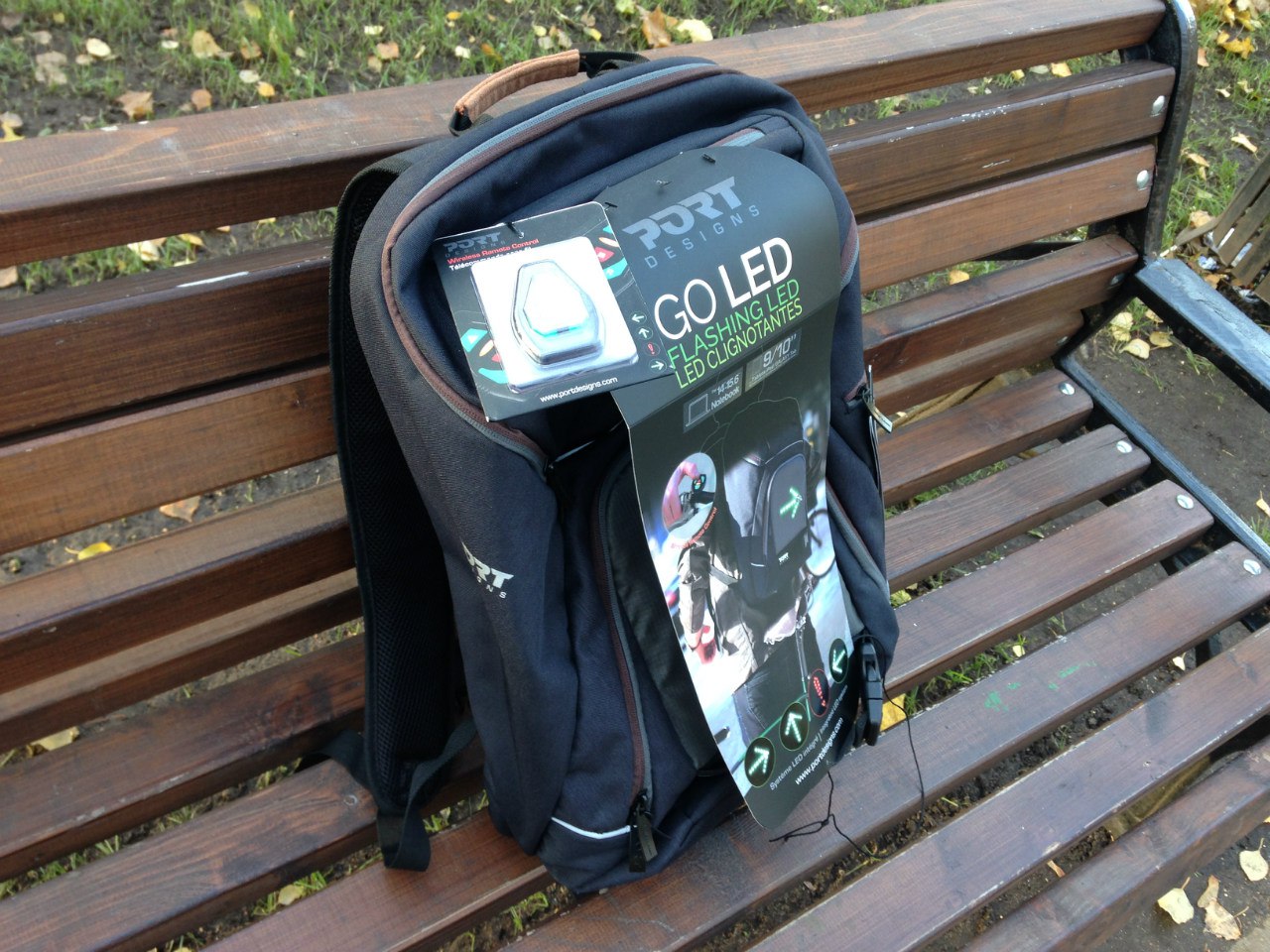
In everyday life, I use only backpacks to carry my personal belongings and do not recognize anything else. Of course, if we were talking about an ordinary backpack, he would not have gotten to the review. I also love all kinds of technological gadgets, and now one of them is right in my hands.
Meet Port Designs GO LED backpack with an informational LED panel focused on urban traffic, and the manufacturer emphasizes that the backpack's usage profile is very wide - from riding bicycles to scooters and skateboards.
I was vividly interested in such an idea, and therefore I want to talk about my personal experience in using this backpack in everyday life.
All images in the text have a high resolution.
At first glance, everything is simpler
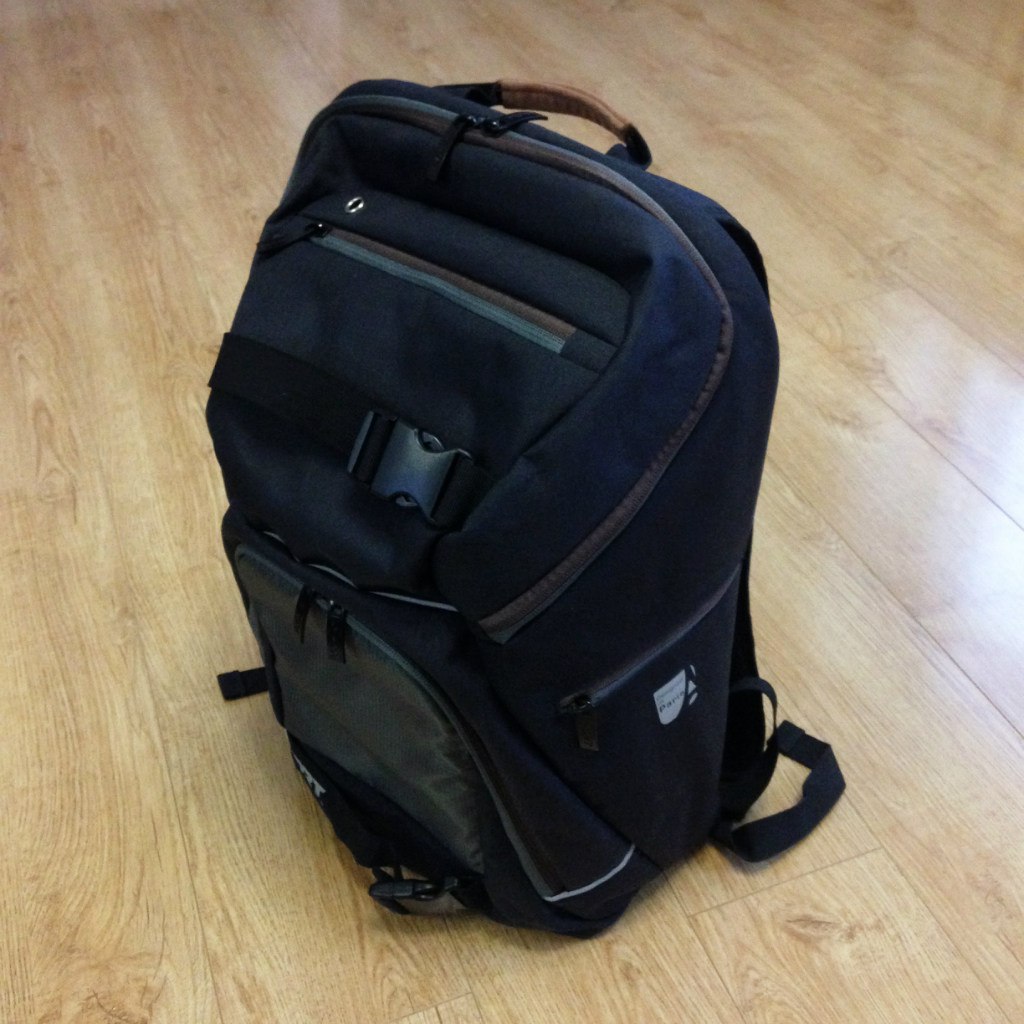
I had a very strange first impression of a backpack. If I did not know that an LED panel was built into his back, I would say that in front of me is an ordinary backpack. At the back there is such an interesting insert, all other details are in harmony with each other, visually it looks nice, and it is compact in itself - an excellent backpack for city walks.
And still in front of me was a regular backpack. But, like another gadget man, I was eager to find out how it all works, so I tore off all the wrappers from the remotes and started just poking, not really going into the instructions. It was in vain. Of course, you can figure it out without instructions, but sometimes you should also read it, even for such a device. By the way, the instructions feature only English and French. Of course, it’s easy to understand, especially if you have basic skills, but this option is not suitable for everyone. A small miss, to the manufacturer for a note.
But after I stumbled across the remote control - yes, this backpack is not just with a panel, it also works from the remote control - I decided to study everything carefully, and each time I realized that the backpack turned out to be much more interesting than my original representation.
Appearances
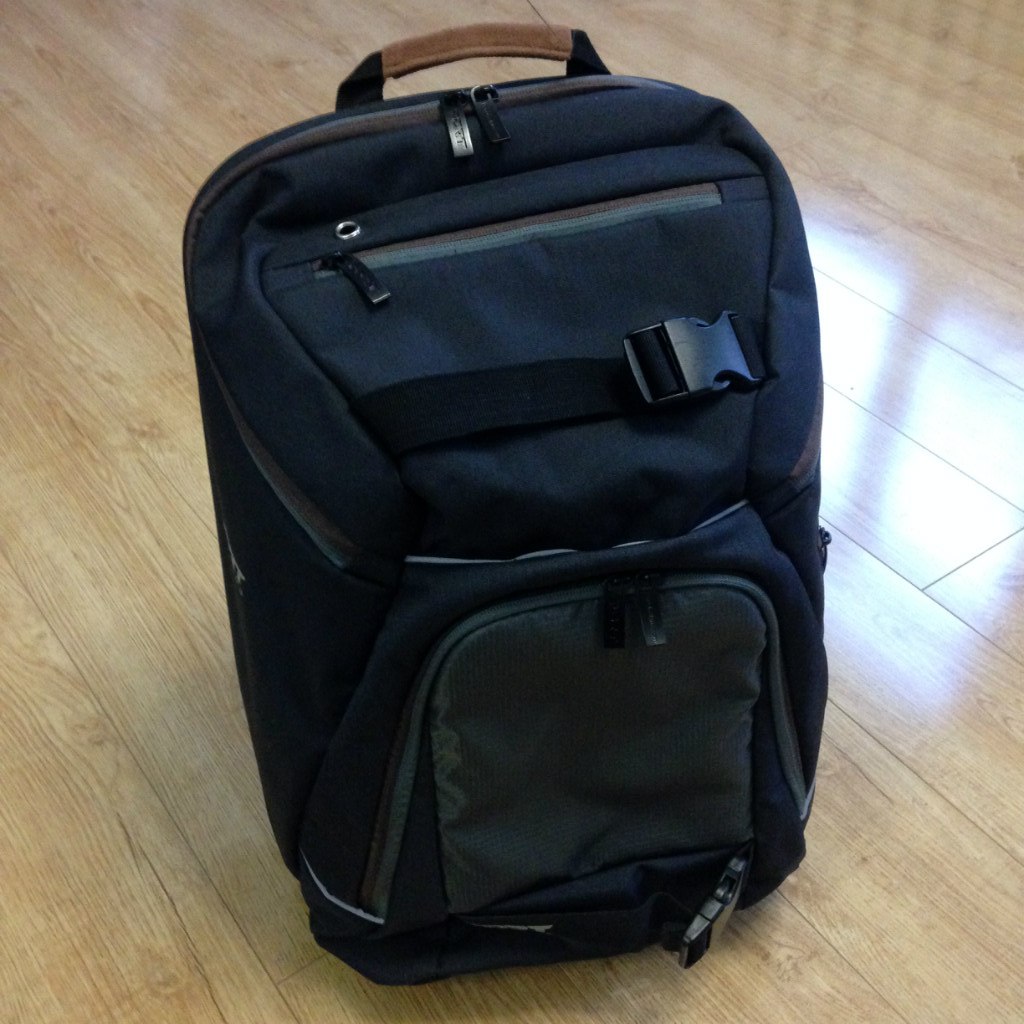
To keep things in order, I’ll walk through the external device of the backpack. A compact backpack with a capacity of 35 liters (this is information from a piece of paper) is made of reliable and time-tested waterproof nylon, has a hard back for the safety of a laptop and other fragile gadgets, a pair of pillows with mesh fabric on the back of the backpack and its straps for blowing, as well as has not the most impressive number of branches. But with such a backpack you can safely ride in public transport, without fear of hitting someone or stopping someone. Of course, it is preferable to remove the backpack here, but if it did not work out, then you will be the most problem-free passenger.

If you do not clog the backpack in full, then its thickness pleasantly surprises - less than 14 cmin thickness, however, slightly above the middle, its thickness increases and can reach 19 cm . Good result. The height of the backpack is 50 cm , the width is 34 cm .
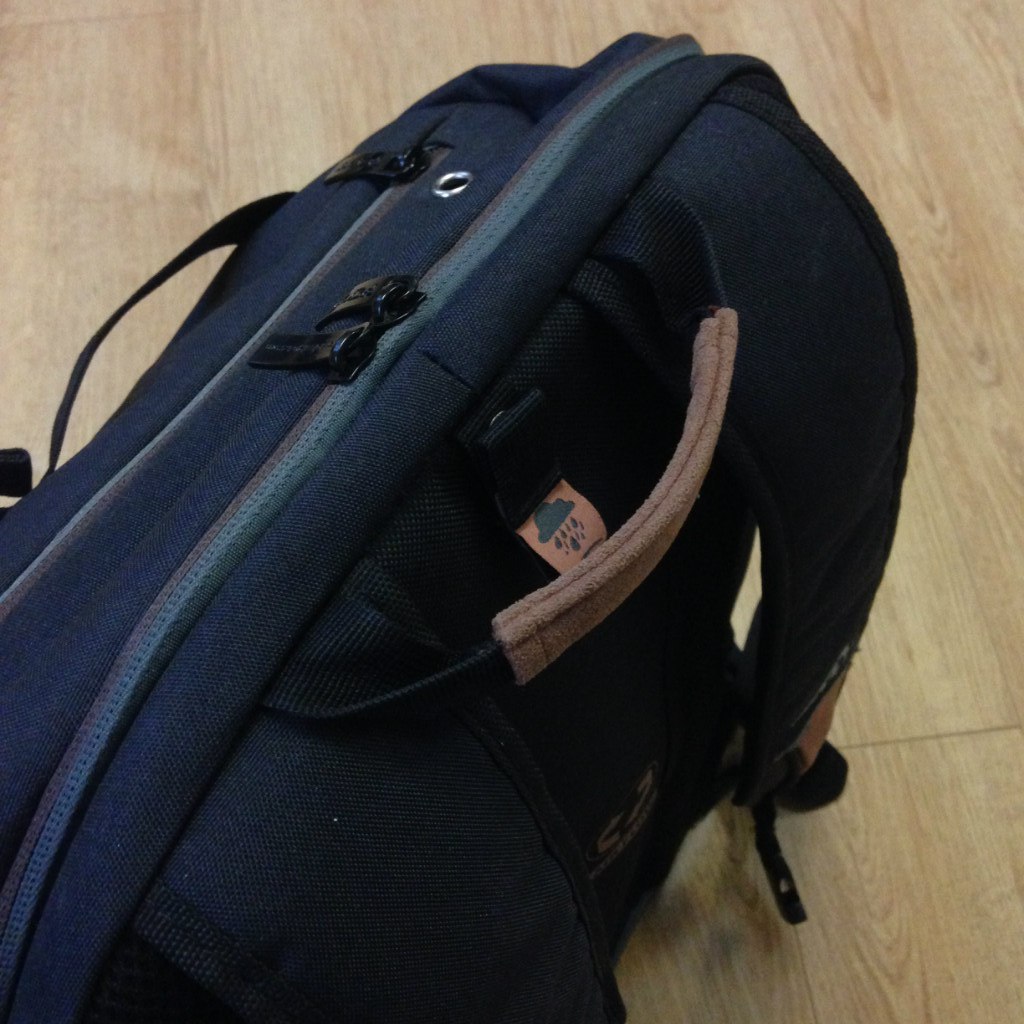
The handle of the backpack does not cause a feeling of reliability - it is quite thin, without any additional protection and simply sewn into the straps. She feels wrapped in synthetic suede. The same inserts are present on the straps of the backpack. They do not carry a functional load - just an element of decor. Also, with a heavy load, the handle begins to crash into the hand, which is not very nice. This point should also be worked out.
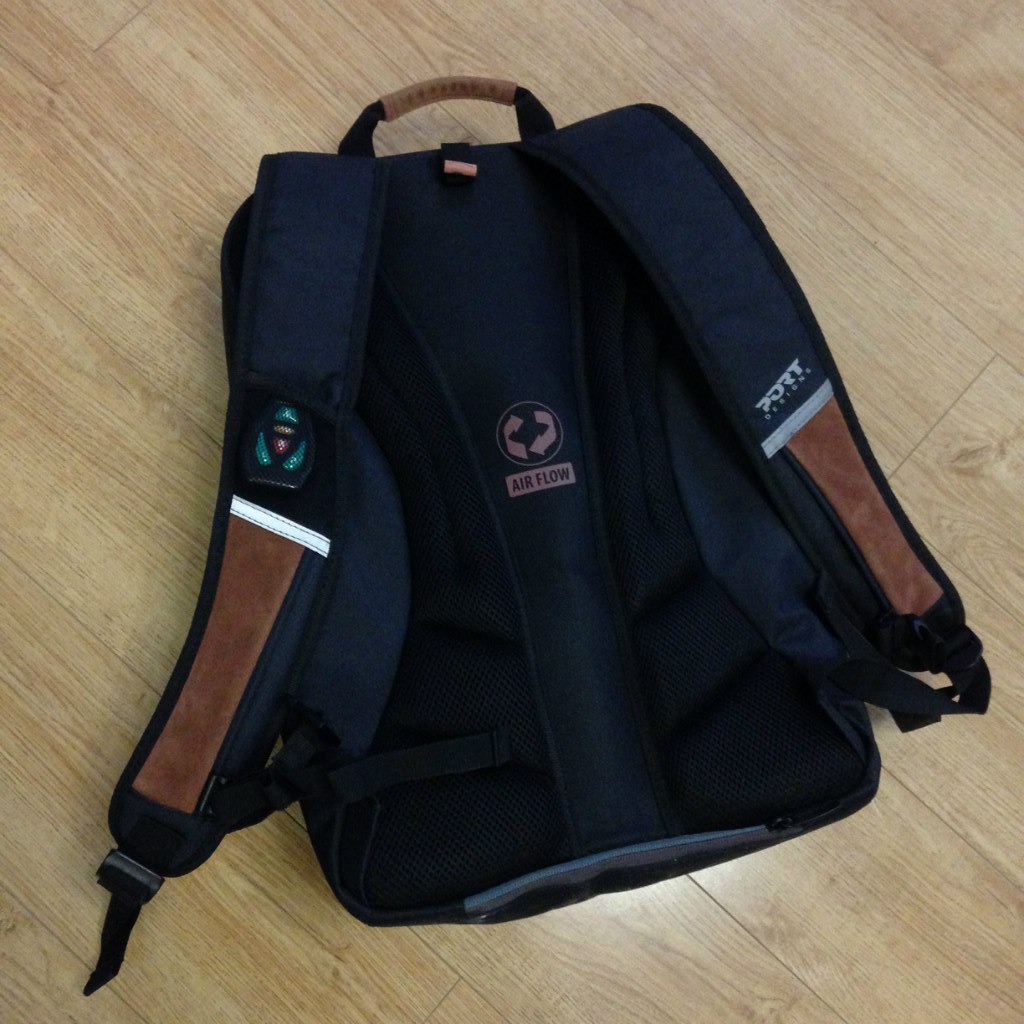
The straps of the backpack are quite wide, hold well on the shoulders, and thanks to the pillows, the straps do not cut the shoulders and provide good blowing, which will only be relevant in hot weather or during an active trip. On the outside of the straps are two reflective elements. On the right shoulder strap there is a separate pocket of mesh material, designed specifically for the control panel.
The straps are quite simply adjustable in height, but you can’t do this with one hand - the fittings do not allow it. With one hand you will have to lift the lock, with the second - pull the strap to adjust the strap to the required level. But the straps themselves will not go anywhere and will be in a fixed position all the time.
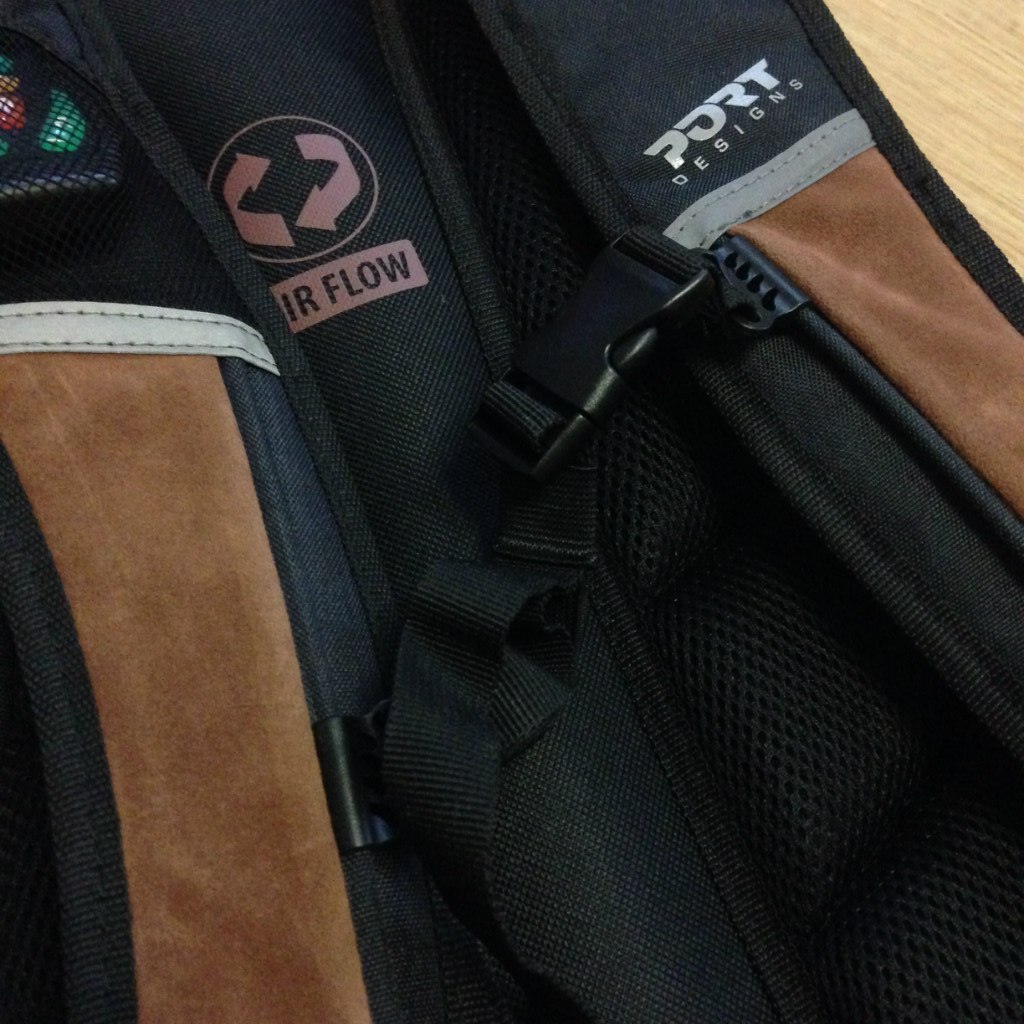
On the backpack there is one chest belt, which is regulated not only by the force on the chest, but also it is adjustable in height. To do this, both parts of the belt are set on a kind of rails, so that everyone will find a comfortable position for themselves.

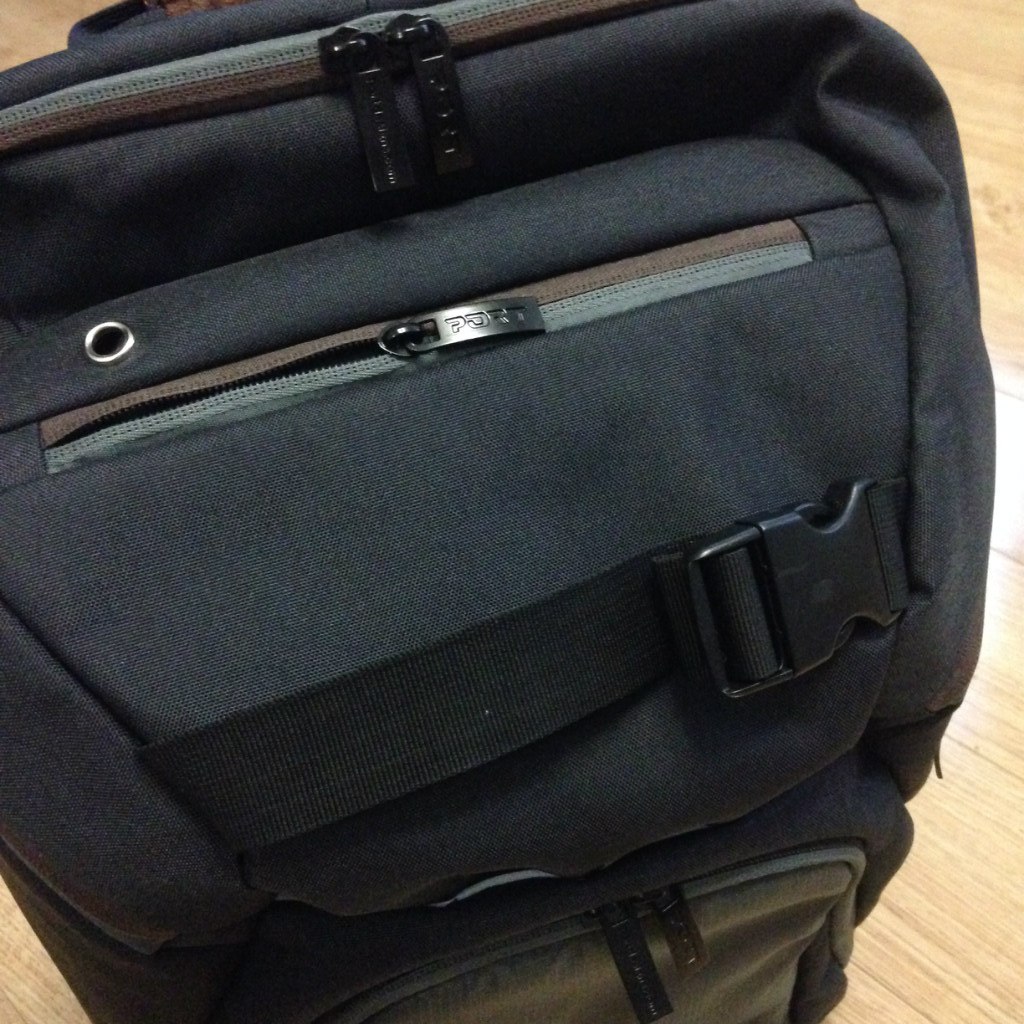
The locks on the entire backpack are metal, it is very easy to use them to access any compartment of the backpack. All zippers on the backpack are covered with a cloth to provide protection from water. All the carabiners on the backpack are quite reliable, although they are made of plastic. Easy to open, easy to snap with a characteristic resounding click. There is absolutely nothing to complain about.
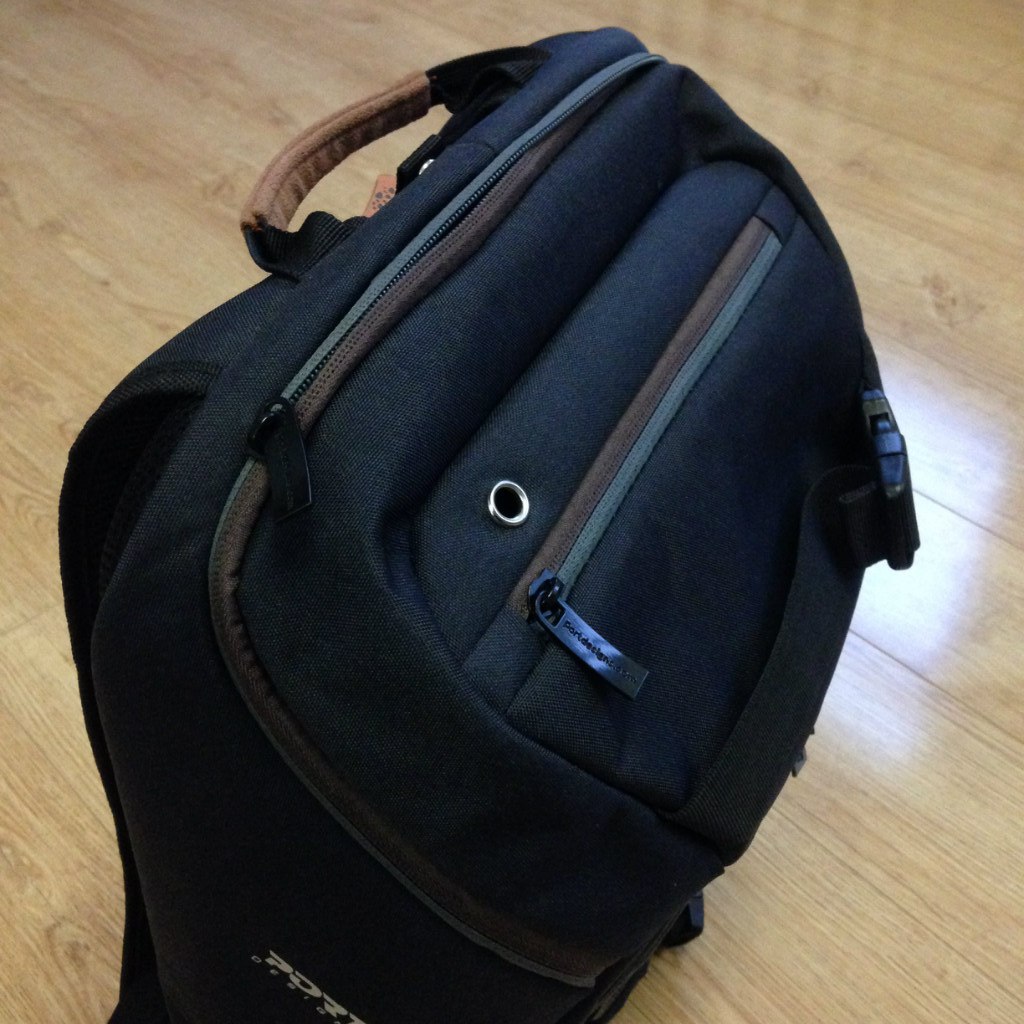
There are 4 departments in the backpack. The main and largest section, a pocket section behind a large section for the player with the ability to output headphones, a section with access to the LED panel and a small section on the right (if you look at the front of the backpack). All of them, except the largest department, open easily. You will have to tinker with the largest department. It's not about the locks (they all work fine too), and especially the zippers - it is quite bent, and therefore it is problematic to open this department with one hand, and especially with a heavy load (with a laptop and things inside). Everything is decided by substituting the knee under the backpack, so that you can adapt.
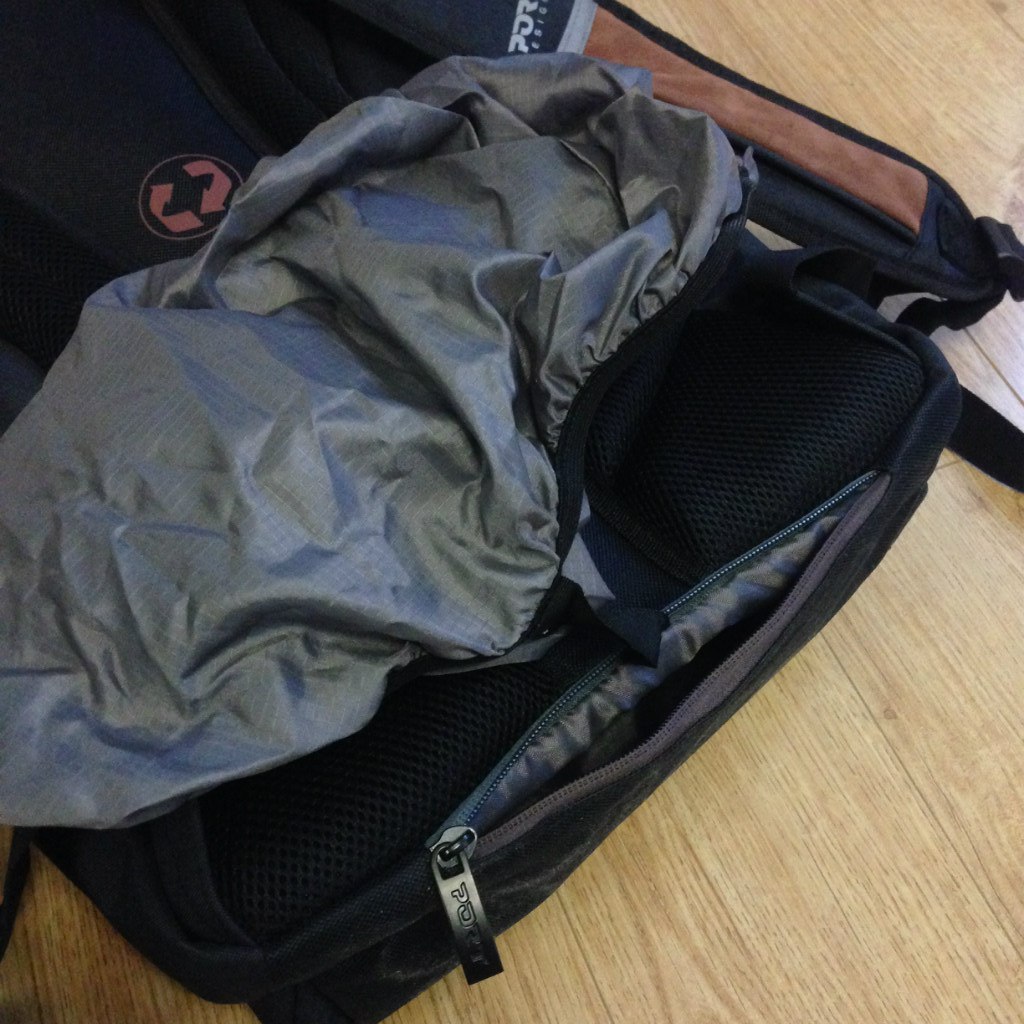

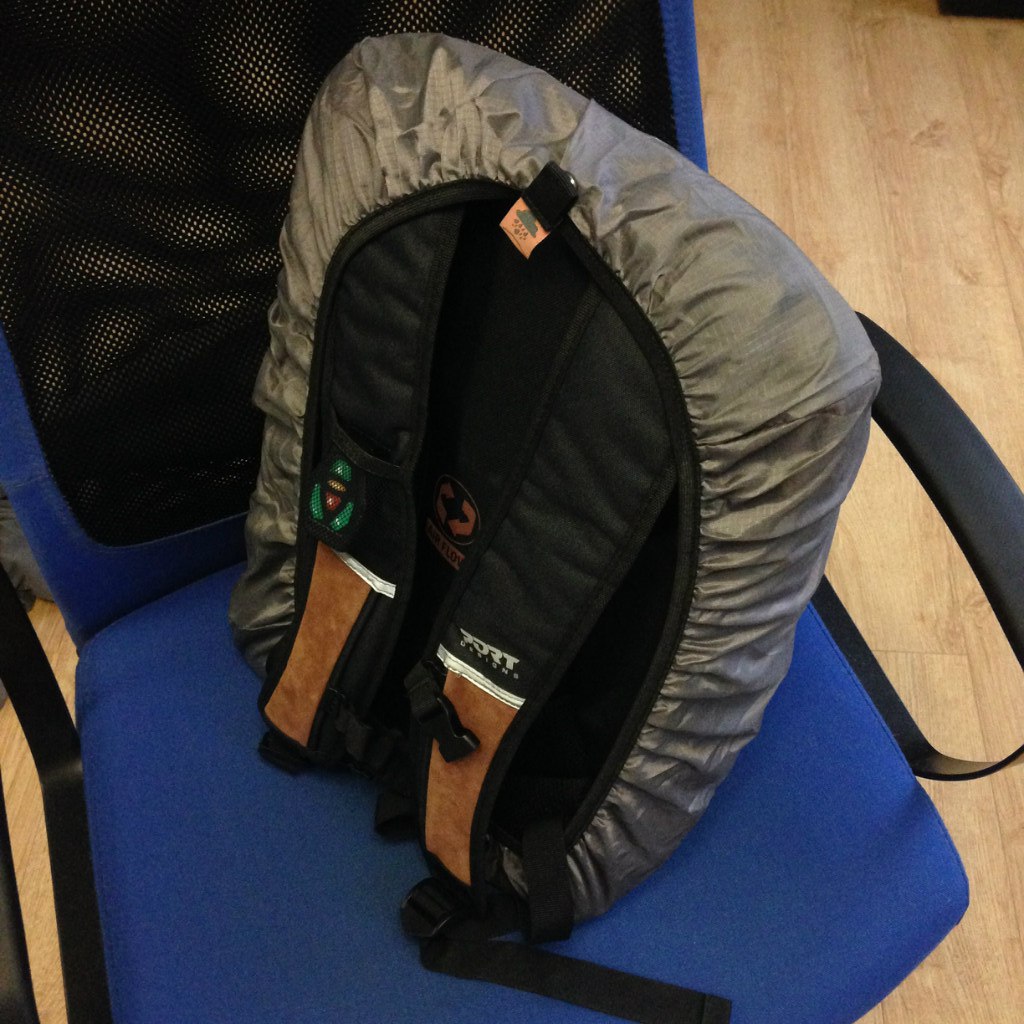
Also, as it turned out - I missed this moment when I first met - the backpack has a shell of a
Insides

I'll start from the end: the side section of the backpack is designed for every little thing - sunglasses, a water bottle, keys. Any small things will also go to the department with the panel - wet wipes, a small purse with small things (for travel), the same keys. There, running ahead, you can put a portable battery - an indispensable thing in long-distance trains. Especially when you consider that the LED panel is recharged via USB (micro-USB wire -> USB is attached).
The compact section on top is designed for the player, there is also a hole for headphones. Personally, I do not use this, but, quite possibly, on long trips this department will be relevant.
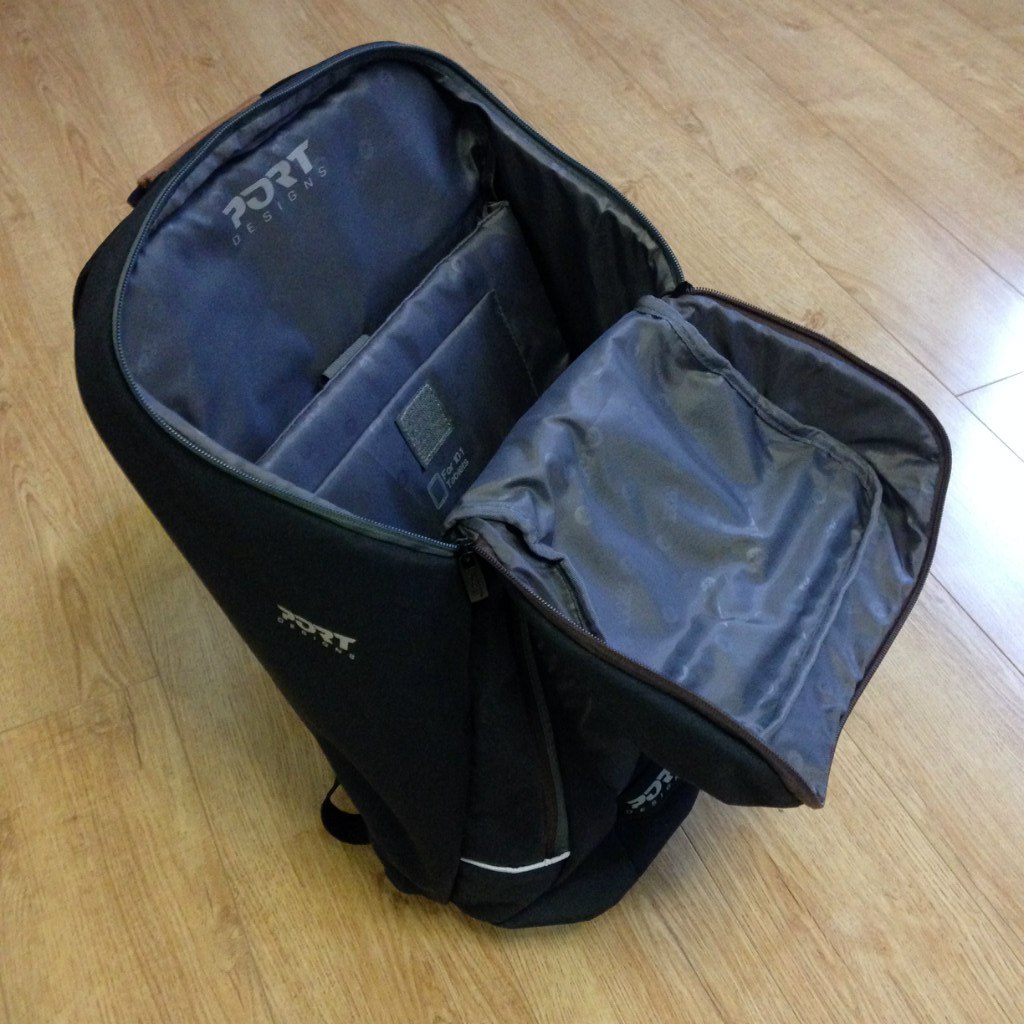
And now the most important thing is the main department. It is really (in comparison with all other departments) large and it has everything necessary for convenient transportation of all devices and indeed any things. Inside, there are separate pockets for a laptop (the maximum diagonal of a laptop is 15.6 inches), a tablet (10.1 inches) and a separate mesh pocket for every little thing. Since it is under lock and key, you can safely put your wallet and keys there, as well as any important documents, since there they will be under reliable protection. Also, the department for a laptop and tablet has an elastic strap that will not allow the devices to hang inside the backpack.
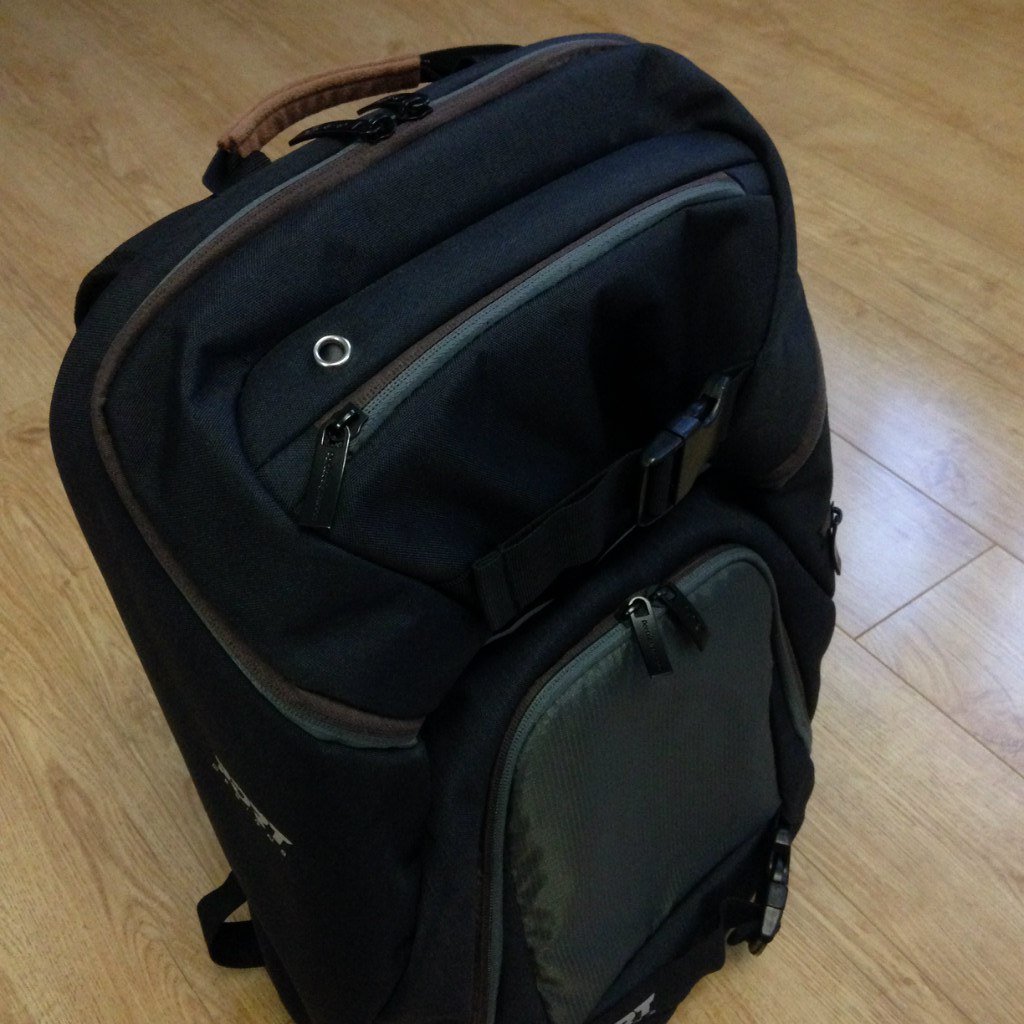
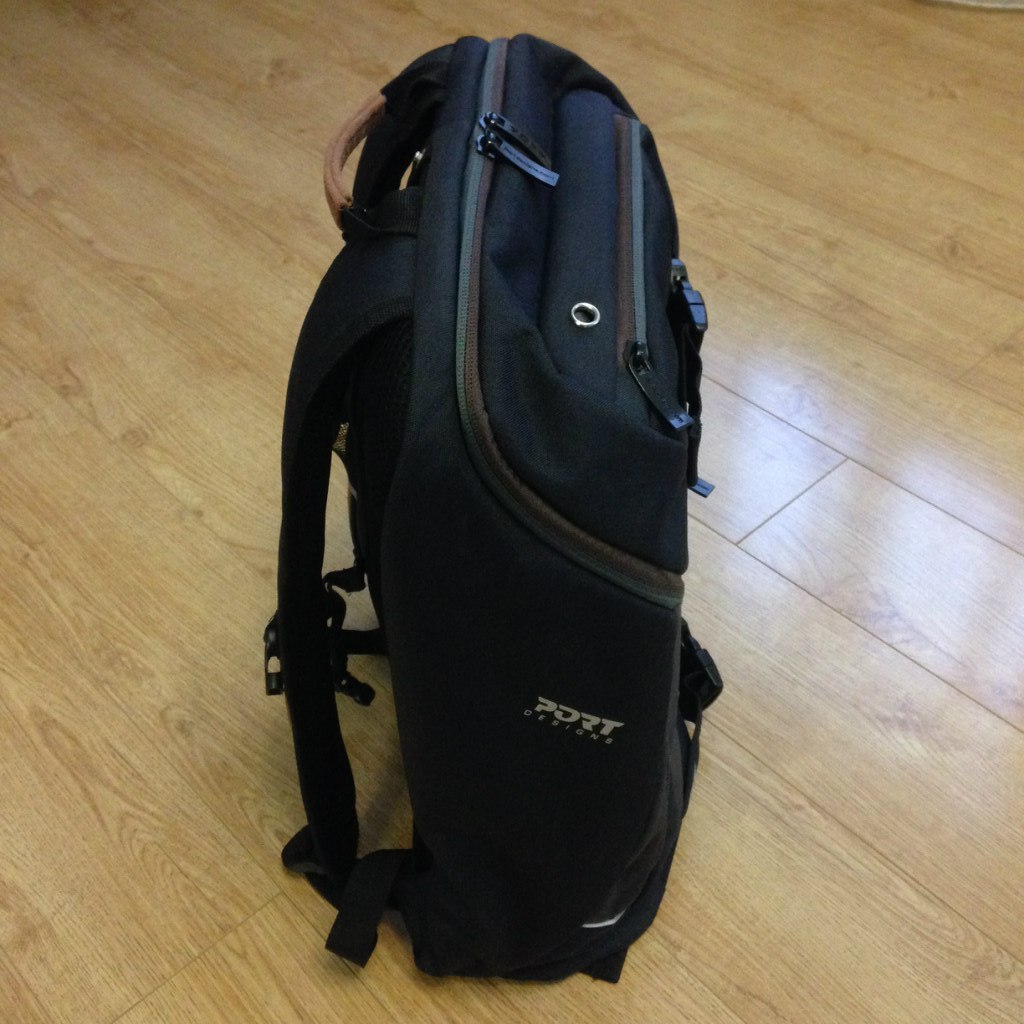
Another detail that I did not find immediately. More precisely, two details, depending on the use: if the upper carabiner on the backpack is not used and tightened harder, the backpack will be 14 cm thick. And if the carabiner is loosened and the backpack takes its shape, then the LED panel will tilted at an angle, which means when riding a bicycle it will be better distinguishable (because it will be approximately at right angles for the observer). However, in this case, the thickness of the backpack will increase.
On this, the examination of the backpack as a backpack is over, we begin to get acquainted with it as an advanced gadget.
It also glows


The most important (and, by the way, the most expensive) part is the LED panel integrated into the back of the backpack. This panel, as I understand it, has a built-in battery, so it is recharged via the USB cable that comes with the kit. The panel is turned on using the button (the place of pressing in the department itself is marked with a red icon on the power button), it is controlled using the complete remote control. The wireless remote control operates at a frequency of 2.4 GHz, has 5 buttons (4 of them are designed to indicate the direction of movement) and is powered by two CR2032 batteries. As indicated in the specification, the LED panel is capable of working for 40 hours without recharging.
The remote control has an interesting shape, especially with regard to the shape of the buttons. It took me some time to get used to them, because they are rather tight and not so big that they hit the required button exactly the first time, especially when using blindly. But, as I think, it's all a matter of habit.
As I understand it, the main focus of this backpack is on people who use a bicycle on daily trips, but it is immediately indicated that it is suitable for people who ride roller skates, skateboards and scooters. Included with the backpack is a special bike mount.
Testing and operation
First of all, I want to show how the backpack looks on the owner. My height is 178 cm, so I, relatively speaking, belong to the average user.


The backpack sits well, it doesn’t cut its shoulders, it feels like a rigid frame, so I didn’t worry about all the things and devices inside the backpack. Depending on the thickness of the jacket or in general its presence, the straps of the backpack are easily adjustable, albeit with two hands, so that the backpack on the back sits tight and does not hang out at all.
Although it is not full of heaps of different pockets, what he gives is more than enough for me personally. Moreover, in the spacious main department any everyday things can easily be accommodated, so I did not complain about the lack of space. Is it that some specific things (like a pocket for some kind of charging or fastening for writing instruments) were not enough, but I would not say that this is so critical. In any case, for the most part I now use a smartphone to record any important things, so this is partly just a matter of habit.
And a short video showing all the inside of a backpack:
Next up is the LED panel. First of all, I want to tell the principle of her work. Most importantly, to activate it, you will definitely have to press a button inside the backpack. In my opinion, this is a little inconvenient. Why couldn't you just turn on the remote?
Having figured out how this works, I realized that this moment was also thought out. However, without instructions, I would not understand. The fact is that after turning on the LED panel, it can be put into sleep mode, after which it can be activated again, but only with the remote control. It’s quite convenient. However, as I understand it, this will affect the battery life of the panel and remote control. Indeed, in order to transmit a signal, the backpack panel communicates via air with the remote control. But it’s still better than pushing the button inside the backpack every time.
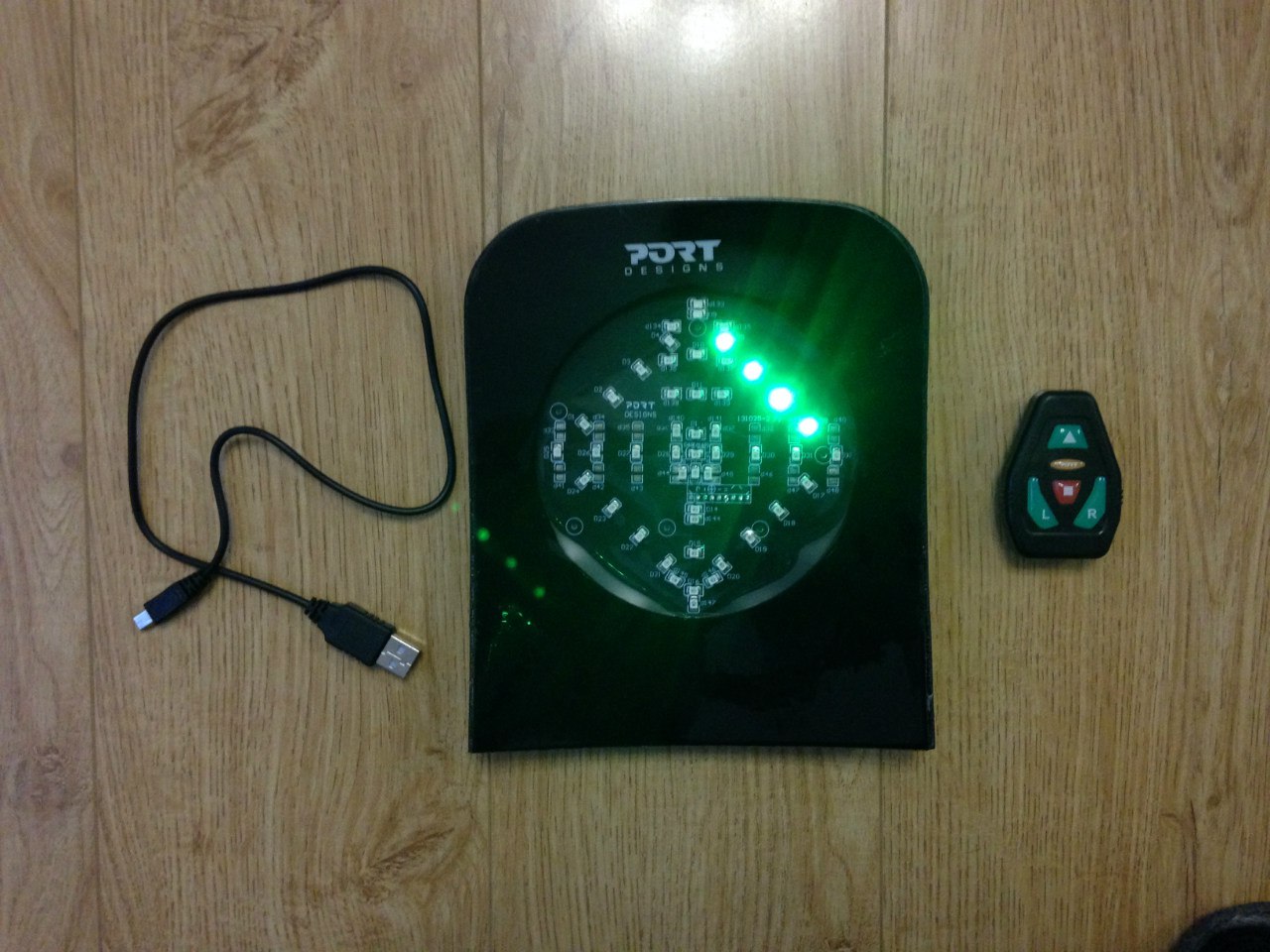
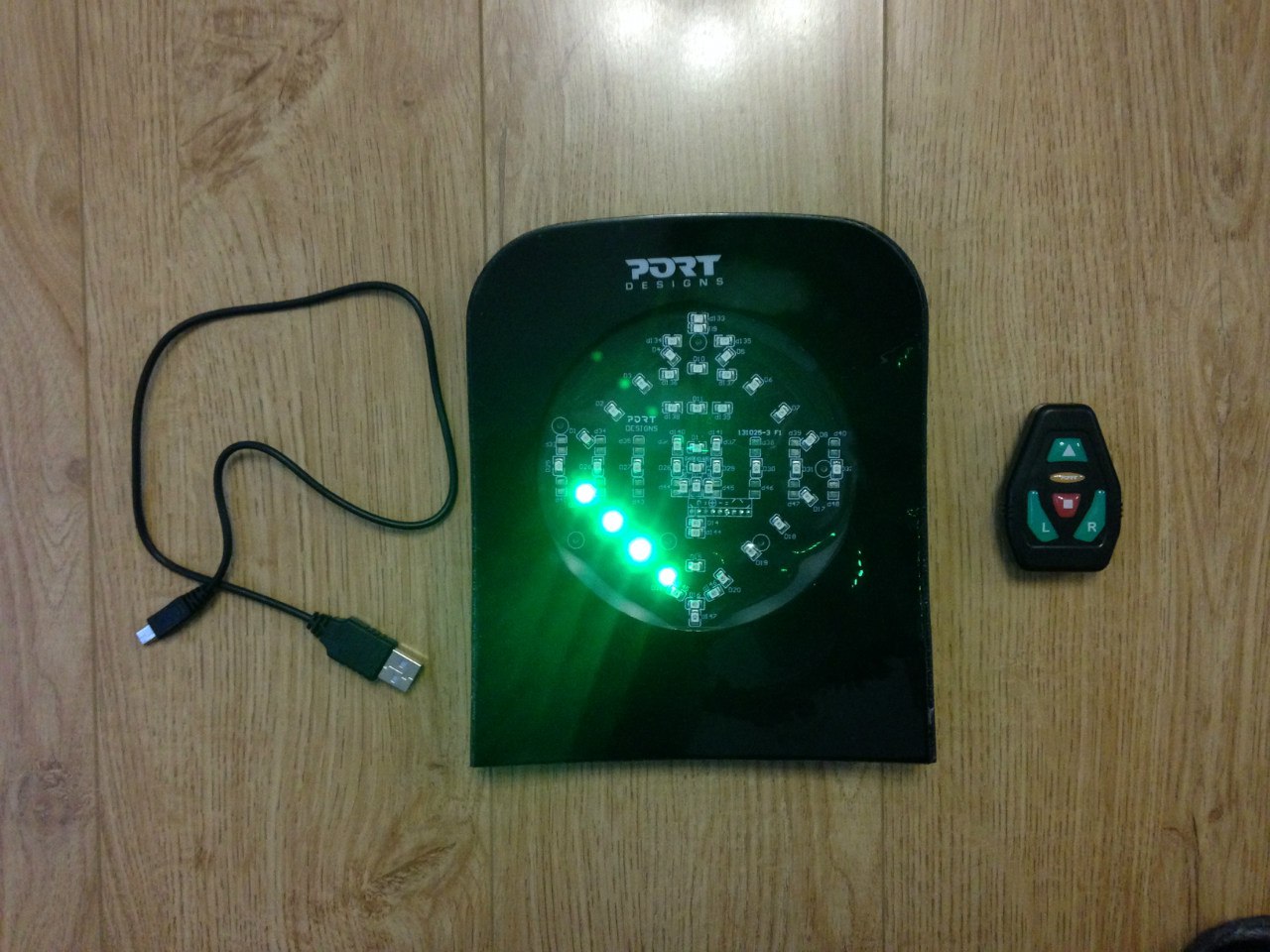
Immediately another feature was waiting for me that I had not noticed before: the backpack mesh, through which signals were visible, moved slightly away from the panel. That is, it is not glued to the backpack, but simply is in the free position. And if it is a little off, then the light from the LED panel is very well scattered. If in the dark, the symbol will still be recognizable, then in the daylight it will appear vague and somewhat poorly readable. Oddly enough, this only happens when the backpack is unloaded. In the loaded state, the back part protrudes slightly, and then the grid on the department with the panel is pulled, which is why all the characters again become readable. The conclusion here is simple - it’s better not to travel around the city with an empty backpack :)
However, all this is better to see once than to try to describe like this:
Everything is perfectly visible in the video. Once again, if someone has not watched the video: when turned on, the LED panel starts blinking with 4 LEDs, and the flash position changes each time (there are 4 such positions in total), indicating the participant in the road. When the button is pressed, the LED panel lights up with the selected symbol. It blinks for 20 seconds, after which it returns to its initial position. It is a pity that there is no brightness control of the LEDs on the panel, and there is also no choice of the backlight mode (blinking, constant light). I think that would be welcome.
And, of course, urban operation. The first time I got into the park to check the whole system in action, so you should just look at this too:
As you can see, in order to navigate in such conditions (on a skateboard), you have to hold the remote control with your hand, which, in my opinion, is not very convenient. Most of all, a backpack is suitable for those who have a steering wheel to fix the control panel on it - people on scooters and cyclists.
After that, the other day, I rode a bicycle around the city, and, frankly, with such a thing behind me, I felt much more confident on the road. I pressed the button and after a couple of seconds moved in the direction I needed. I don’t know if car drivers appreciated such a thing in action, but I was much safer to go, knowing that I indicate my direction of movement.
After completing the trips and all the walks, I sat down and analyzed the experience gained. And here I want to note some points.
Grid on the LED panel.With an empty backpack, it can go off a little, and, although in the dark, a fairly distinct mark of the arrows is preserved, the characters themselves turn out to be much more blurry. I would like some refinement of this point.
The waterproof case, which is hidden at the bottom of the backpack, further increases the dispersibility of the characters. Given that in the rain the travel conditions themselves become more difficult, this point should also be taken into account. Here I want to say that the back part, where the panel shines through, is not waterproof, so in the rain you should use a protective cover. The rest of the backpack is not susceptible to moisture at all - the water just rolls off it. Nylon again showed its best side.
Stop sign.In my opinion, this is one of the most important signs, if suddenly something went wrong on the road. And this sign is less distinguishable than other arrows. All arrows (right, left, forward) are highlighted in bright green, but the stop sign is highlighted in much less bright and red colors. In the dark, it will be a good indicator, but in the daytime it is unlikely. In addition, the brightness of the backlight of the panel is not regulated in any way, which limits the possibilities of its use in difficult situations (in the same rain, for example).
These interesting things were noticed by me during testing. It’s time to take stock.
conclusions
Backpack Port Designs GO LED is an extremely unusual device, although you can’t say the same about it at first glance. I say frankly - the idea of the backpack is just great, and given the fact that more and more people choose bicycles to move around the city, this backpack becomes an extremely relevant solution to ensure their own safety.
The backpack itself is made of fairly high quality - pleasant and practical materials, good fittings, an excellent fit on the back, however, I would like to see some ergonomic refinement, which concerns both the external performance and the organization of the internal space.
The same applies to the LED panel. Some small improvements in the design and logic of its work can qualitatively affect the operation of the backpack as a whole. And personally, I felt a lack of self-contained reflective elements - they are located only on the straps of the backpack, but they would be very useful at the back, especially if at some point the LED panel suddenly discharged. It is clear that this is a rather rare case, but anything happens, so the additional designation of the participant in the movement never hurts.
This backpack has everything to become an interesting and sought-after device - good performance, a great idea with an eye on the near future, but so far, in my opinion, this backpack is not able to become a mass product, if only because it has some design flaws and has a pretty impressive price. This is a backpack with an idea, it should only be brought to mind. The price of this technology gadget is about 11500 rubles.
Pluses of the backpack: a pleasant appearance, the idea with an LED panel, materials and execution, dimensions, ease of landing on the back.
Cons of the backpack: flaws in ergonomics, lack of operating modes of the LED panel and autonomous reflective elements, high price.
